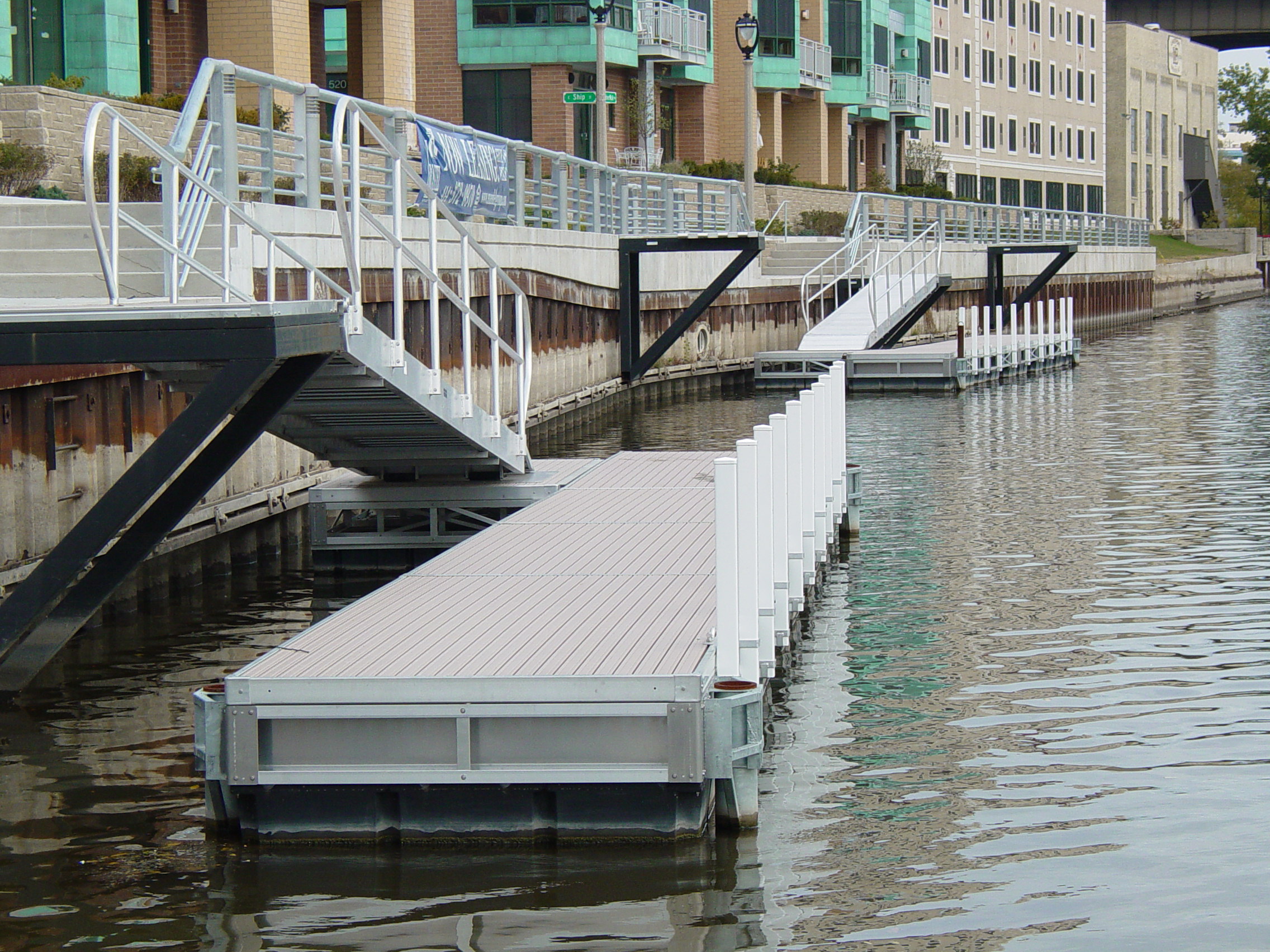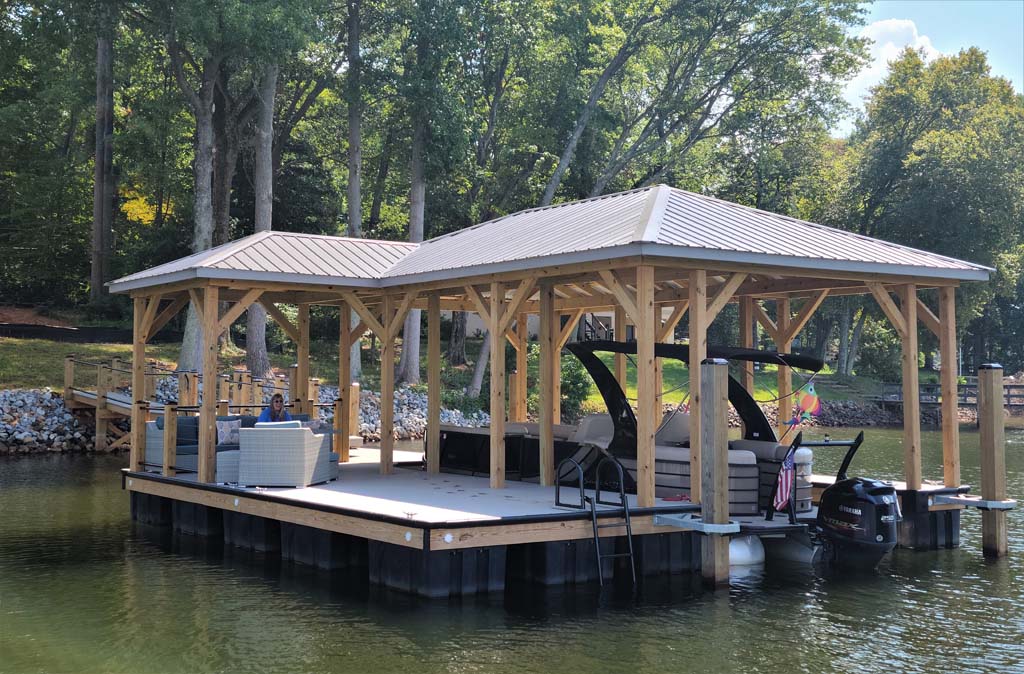Crafting Custom Solutions: Why a Floating Dock Builder is Necessary for Distinct Needs
Crafting Custom Solutions: Why a Floating Dock Builder is Necessary for Distinct Needs
Blog Article
Produce the Perfect Docking Option With Floating Docks
Floating docks present a versatile solution for a selection of maritime demands, adjusting effortlessly to changing water degrees and varied vessel kinds. Their modular nature permits rapid installation and moving, yet the selection of proper materials and style features is vital for making sure both performance and aesthetic charm. As we explore the vital aspects that add to the efficiency of floating docks, a number of vital variables pertaining to security and maintenance will certainly arise, questioning about how to maximize your docking experience. The succeeding discussion will certainly light up these crucial considerations.

Advantages of Floating Docks
Floating docks offer countless advantages that make them a perfect option for different maritime applications. Unlike repaired docks, floating docks rise and fall with the trend, ensuring consistent accessibility for vessels.
In addition, floating docks are generally much easier and quicker to set up compared to traditional set frameworks. Their modular style permits straightforward assembly and disassembly, facilitating upkeep and relocation when required. This adaptability is particularly useful for momentary applications or in settings where problems may change.
Floating docks additionally often tend to be much more eco-friendly, as they lessen disruption to the seabed and bordering water communities. Their resilient nature minimizes the danger of damage to aquatic life, promoting a much healthier environment. In addition, these docks can be tailored to accommodate numerous vessel sizes, ensuring that they satisfy specific functional needs - floating dock company.
Ultimately, the mix of adaptability, ease of installment, and ecological considerations makes floating docks a very reliable service for a broad range of maritime requirements.
Choosing the Right Materials
Selecting the appropriate materials for floating docks is critical to ensure durability, toughness, and security. The selection of materials directly impacts the dock's efficiency in numerous environmental problems, including exposure to water, sunshine, and potential wear from aquatic website traffic.
Usual materials used for floating docks consist of light weight aluminum, timber, and high-density polyethylene (HDPE) Aluminum is lightweight, corrosion-resistant, and requires marginal upkeep, making it an excellent choice for longevity. Its initial cost can be greater contrasted to various other materials.
Wood, while visually appealing and offering a standard look, can be vulnerable to rot and insect damages otherwise properly treated. Therefore, using pressure-treated timber or naturally long lasting types like cedar or redwood can alleviate these concerns.
HDPE is a popular selection because of its resistance to UV rays and chemicals, together with being environmentally pleasant. floating dock company. It is lightweight and readily available in numerous colors, allowing for customization
Inevitably, the appropriate product selection will depend on details demands, including spending plan, preferred looks, and environmental factors to consider. Cautious assessment of these variables will certainly cause a durable and effective floating dock remedy.
Design Factors To Consider for Security
When developing floating docks, making sure stability is an essential facet that can considerably influence their functionality and security. Security in floating dock design is affected by various elements, including buoyancy, weight circulation, and the plan of elements. An optimum buoyancy system should make use of materials that give sufficient lift while reducing weight. This equilibrium makes certain that the dock continues to be above water, even under differing tons.
Weight circulation is critical; equally distributing tons throughout the dock the original source stops tilting and improves stability. This can be attained via calculated positioning of docking tools, such as fenders and cleats, in addition to proper spacing of drifts. Additionally, the measurements of the dock ought to be attentively planned. Broader designs can provide raised security, specifically in harsh water problems, while longer docks may call for extra supports to avoid sagging.
One more essential consideration is the environmental influence, consisting of wave action and wind. Incorporating attributes such as sidewalls or skirting can assist mitigate the impacts of environmental pressures, keeping stability in adverse problems. Eventually, a mix of thoughtful design, material option, and understanding of environmental aspects look here will certainly generate a drifting dock that satisfies both security and safety requirements.
Installation Tips and Techniques

Following, safeguard the necessary authorizations and follow local guidelines, which may dictate setup techniques and ecological factors to consider. If called for, engage a certified professional experienced in floating dock installations. Usage high-grade products created for aquatic atmospheres to improve sturdiness and longevity.
When positioning the dock, straighten it alongside the shoreline to promote simple access. Ensure that the anchoring system is durable, using concrete blocks or helical supports to stabilize the dock against wind and page wave activity. It's critical to account for seasonal water level variations, including possible ice activity in chillier climates.
During the setup, confirm the dock's floatation and security prior to wrapping up the anchoring. Regularly inspect the setup for any type of signs of wear or damages. By adhering to these ideas and strategies, you can accomplish a protected, practical, and visually pleasing floating dock setup that fulfills your needs.
Maintenance and Care Standards
Keeping and caring for floating docks is vital to lengthening their life-span and making certain safe usage. Routine inspections must be conducted to identify any type of indications of wear, damages, or aquatic development. Look for cracks, loose fittings, or stained locations on the dock's surface area, as these concerns can endanger architectural honesty.
Cleansing is essential. Use a pressure washer to remove algae, barnacles, and debris, which can build up in time. For stubborn growth, consider ecologically friendly cleaning agents that will not damage marine life.
In addition, examine the mooring lines and supports frequently to ensure they are protected and totally free from corrosion. Replace any kind of torn or damaged lines quickly to maintain security.
Throughout severe weather condition, such as storms or freezing conditions, take preventive actions. Protect the dock with extra mooring lines and, if feasible, get rid of any kind of removable elements to avoid damages.
Final Thought
To conclude, the implementation of floating docks offers a reliable and flexible docking option appropriate for numerous maritime applications. Their versatility to changing water levels, incorporated with a modular style, enables very easy personalization and relocation. Picking suitable products improves both toughness and visual allure, while cautious factor to consider of stability ensures safety and security and longevity. With correct installment and routine maintenance, floating docks can offer effective and trustworthy docking experiences for a vast array of vessels.
As we check out the essential aspects that add to the effectiveness of floating docks, a number of vital aspects concerning stability and upkeep will certainly arise, raising questions regarding exactly how to optimize your docking experience. Unlike repaired docks, floating docks surge and fall with the tide, ensuring constant ease of access for vessels.When making floating docks, making certain stability is a fundamental aspect that can substantially influence their capability and safety and security. Security in floating dock layout is affected by numerous variables, consisting of buoyancy, weight circulation, and the plan of elements. Eventually, a combination of thoughtful style, material selection, and understanding of environmental factors will yield a drifting dock that fulfills both security and security needs.
Report this page